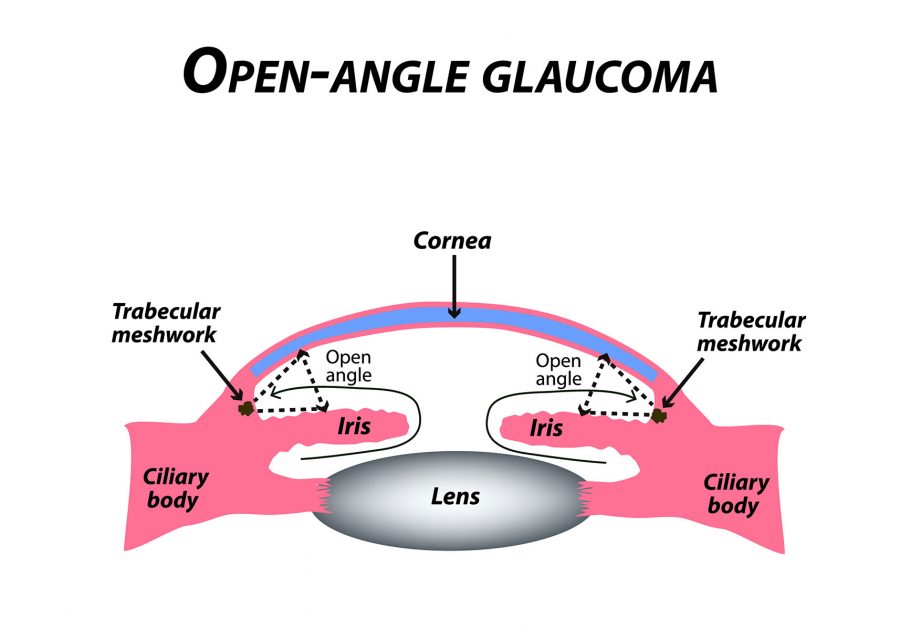Selective Laser Trabeculoplasty
What Is Selective Laser Trabeculoplasty?
Selective Laser Trabeculoplasty (SLT) is a type of laser surgery that can be used to lower pressure in the eye for patients with glaucoma. It’s a safer alternative to an older type of surgery called argon laser trabeculoplasty (ALT). SLT has been used around the world as a glaucoma treatment for more than 25 years. Dr. Sam Cohlmia provides selective laser trabeculoplasty to glaucoma patients in the Wichita area.
How Does SLT Work?
SLT is a non-invasive outpatient surgery that only takes a few minutes. An ophthalmologist uses short pulses from a low-energy or “cool” laser to stimulate specific cells in the eye’s drainage system, known as the trabecular meshwork (TM). This can help the drainage tissue work more effectively to relieve excess pressure inside the eye.
The trabecular meshwork is spongy tissue located in the drainage angle between the iris, or colored part of the eye, and the cornea, which is the clear front part of the eye. TM’s job is to help excess fluid, called aqueous humor, drain out of the eye to maintain correct pressure. If it’s blocked or not functioning correctly, too much pressure can build up inside the eye, which is the case with glaucoma.
Selective laser trabeculoplasty gets its name from the fact that it only targets cells in the trabecular meshwork that contain a natural pigment called melanin, rather than the entire eye drainage structure. This is an alternative to argon laser trabeculoplasty, which targets the entire trabecular meshwork and causes scarring and damage to drainage tissues.
Results
In many cases, SLT can lower the intraocular pressure by about 20% to 25% over the course of one to three months. This is similar to results from the strongest and most common glaucoma medication, prostaglandin analogs.
SLT can be done in multiple treatments, targeting only the places where pressure has built up.
Please note: Selective laser trabeculoplasty is not a glaucoma cure and it cannot restore lost eyesight. Regular eye exams and follow-up care by an ophthalmologist will be required after treatment.
Who Is A Good Candidate?
SLT is recommended for patients who have been diagnosed with either primary or secondary open-angle glaucoma that need to lower their intraocular pressure. It can either be used as a stand-alone treatment or to supplement treatment with topical medications. This makes it a good option for patients who aren’t responding to medications or who want to avoid using them. Newly-diagnosed patients or those with a mild form of the disease who have SLT may not need topical medications.
What Are The Benefits?
One of the primary benefits of SLT is that it has a low risk of side effects, even when compared to glaucoma medications. Other benefits include:
- Slow or stop glaucoma progression
- Effective at lowering pressure inside the eyes
- Extremely safe
- Comfortable, painless procedure
- No scarring or damage to the eye’s drainage structures
- Can reduce or eliminate the need for daily glaucoma eye drops
- Effects of a single treatment can last 3-5 years
- Treatment can be repeated if necessary, although results may not be as effective
What Are The Risks?
SLT carries a low risk of complications, however mild inflammation after the procedure is common. It’s usually treated with eye drops, ibuprofen or another non-steroidal anti-inflammatory (NSAID) medication.
Intraocular pressure can rise after treatment in some cases, but it usually resolves after about 24 hours and a brief round of glaucoma medication.
How Long Do The Effects Last?
SLT generally lowers eye pressure for anywhere from one to five years, and sometimes even longer. The treatment can be repeated after the effects wear off, although results are typically not as good as the initial procedure.
What Can You Expect?
Dr. Cohlmia performs selective laser trabeculoplasty at an outpatient surgery center. Before the procedure, eye drops are applied to numb the eye, lower pressure and decrease pupil size. Then, a special lens is placed over the eye to keep the eyelid open and to direct the laser to the trabecular meshwork.
The machine that ophthalmologists use to perform SLT looks similar to the one used for eye exams, but there’s a laser attached. The treatment typically takes just a few minutes to complete and it’s painless, although you may feel some mild discomfort.
Afterward, your vision may be blurry for a few hours. Your eyes may also ache and feel sensitive to light. You may be given anti-inflammatory drops to help the eyes heal, but typically there are no restrictions on activity after treatment.
Is Selective Laser Trabeculoplasty Right for You?
SLT is a quick, painless procedure that can help lower pressure inside the eye without the need for taking daily medications. It has a low risk of side effects and the results typically last from two to five years. However, medications can also be quite effective at treating glaucoma. Dr. Cohlmia will evaluate your eyes and medical history and then recommend the best treatment options for your individual needs.
Schedule an appointment online or call us at 316-264-8932.

